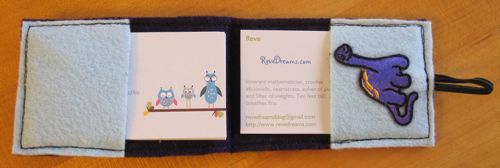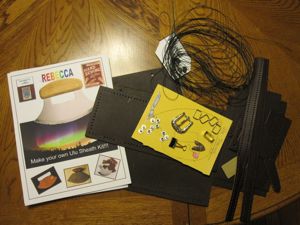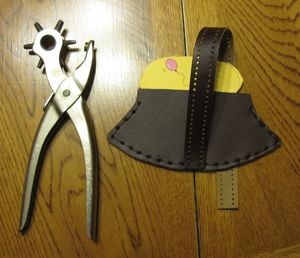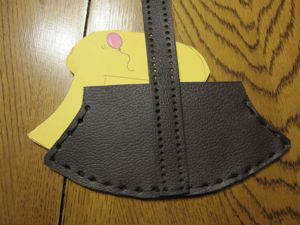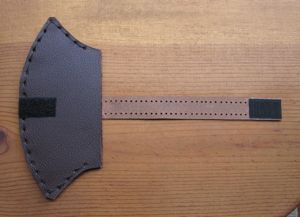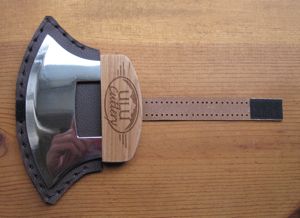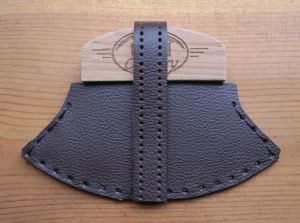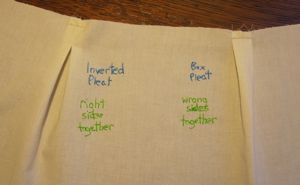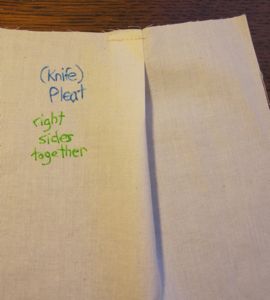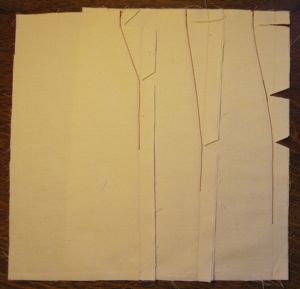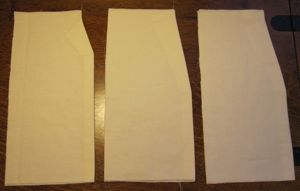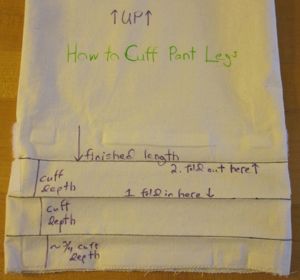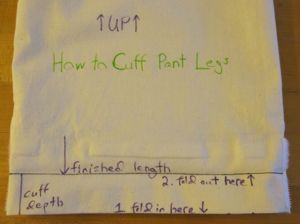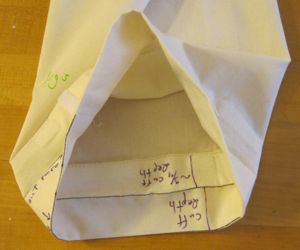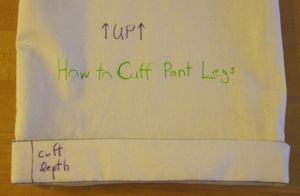This is #3 from the Craft Countdown.
Sometime early in 2010, after calendars went on deep sale, I bought the 2010 Sewing Calendar from Accord Publishing. It was an odd beast; it looks like it should be a page-a-day, but each page has three to four days on it (weekends share a third of a page). Still, that makes 104 sewing projects, of which I had yet to make any before New Year’s Eve.
As I flipped through, the felt business card case caught my eye. I have been unable to find it online – the website of the person it’s attributed to, Lauren Brandy, is now all about painting – but there are a great many tutorials available, several of which are similar.
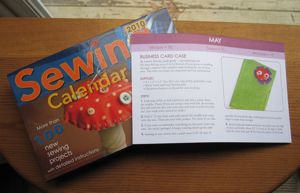
I thought about embellishing mine with buttons, but was dissatisfied with my selection. However, I had a number of iron-on appliques bought before I realized I just don’t make things that appliques go on, and they came out to play. A button did as well; I changed the closure from velcro to a button and elastic loop.
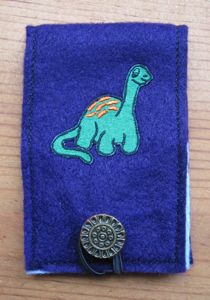
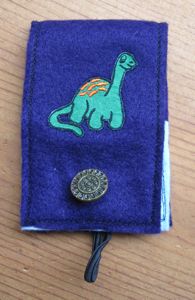
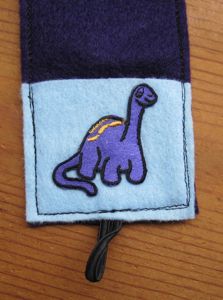
Originally I planned to have a shot of the open, empty case, saying I just needed business cards to go in it, but between then and now my lovely sister made me some!
